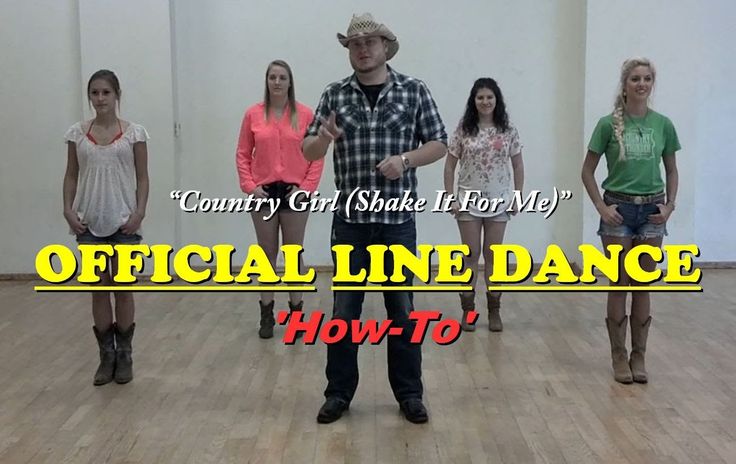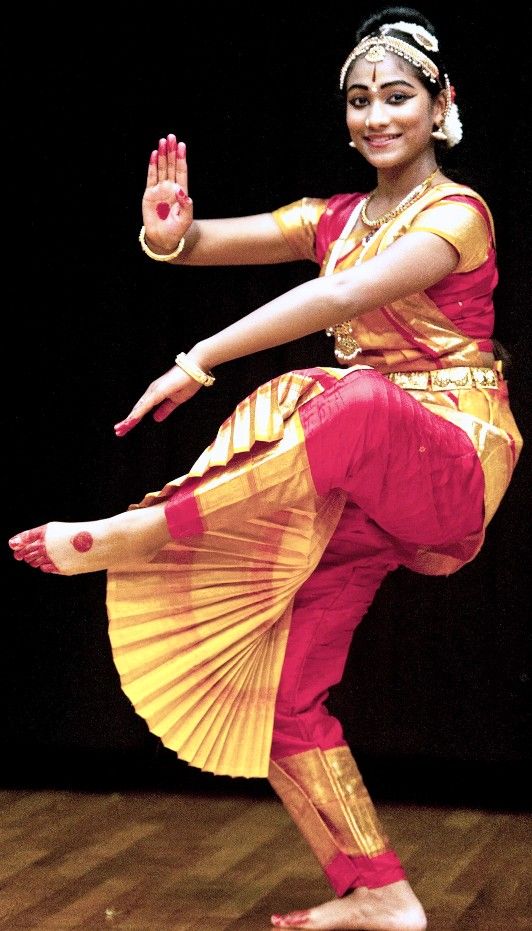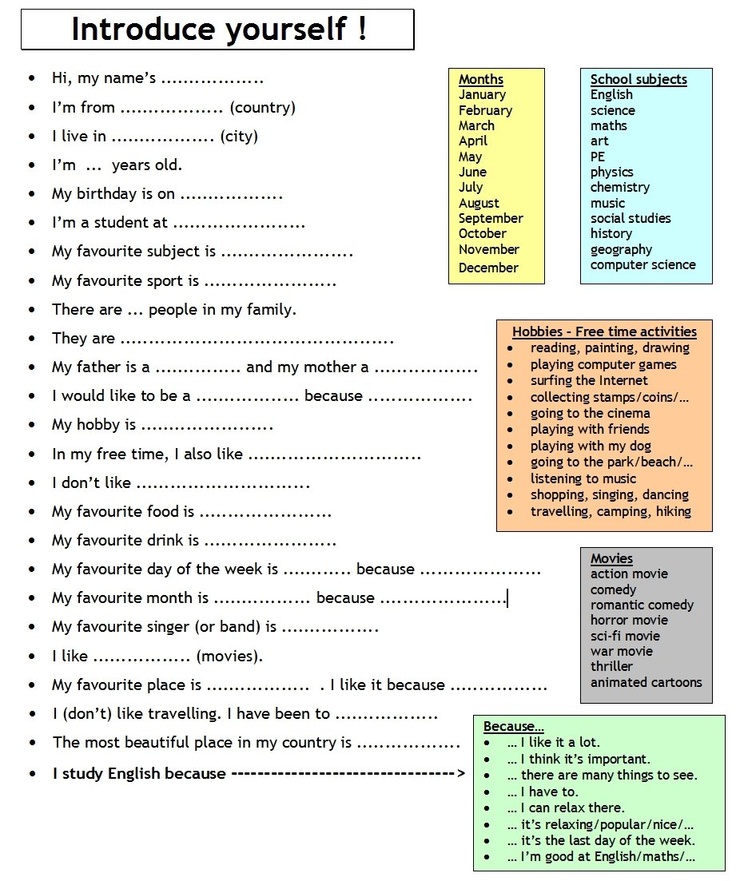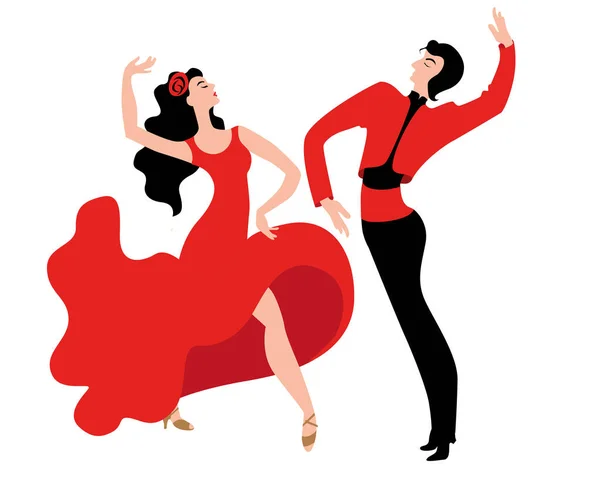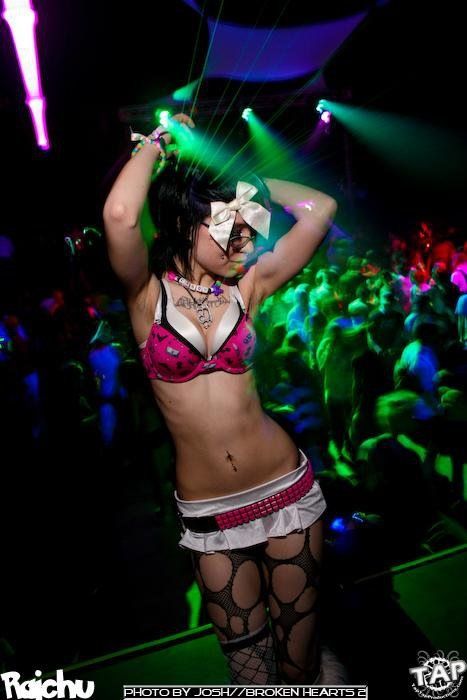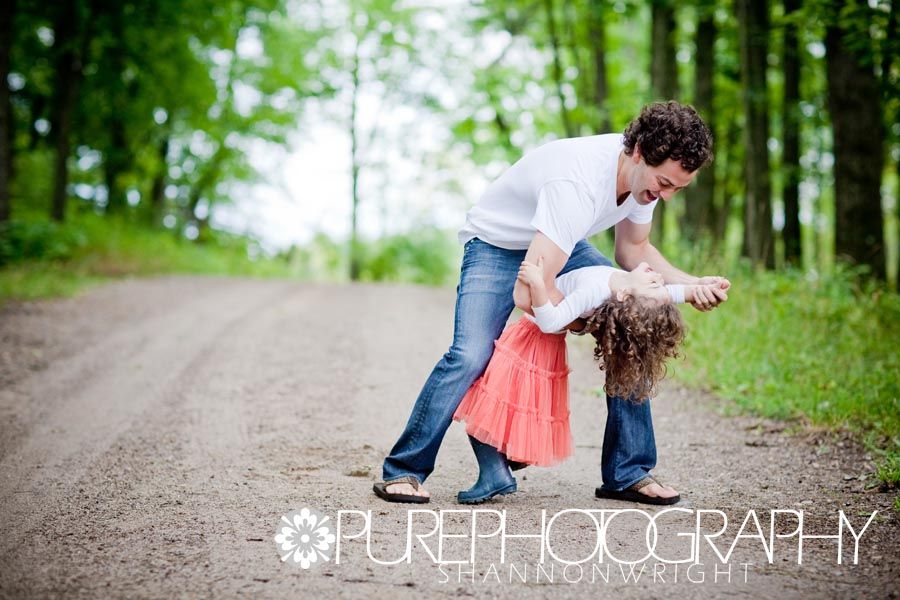How to do the haka dance
How to Do the Haka Dance
How to Do the Haka DanceHaka is a traditional “Maori” dance from New Zealand. There are various types of this dance form as every tribe has its own style. The most common dance style is called “Ka Mate” which has become popular because national rugby team of New Zealand has been performing it at every prominent tournament.
The Haka has a long history as it is an ancient war dance which people do in the memory of a tribal chief who overcame the rival tribes. It is used to intimidate the opponents but only the perfect execution can fulfil its purpose.
Instructions
-
1
Form a group:
The first and foremost thing you should to do is to gather some people. Haka is traditionally done in large group as more people means more impact of this dance style. However, you should not exceed a certain limit otherwise it will become difficult to synchronise all the steps.
Moreover, pick only those who have a natural inclination towards dance as they will easily be trained.
-
2
Let someone lead the group:
In traditional style of Haka, all the members of group follow a leader who is shouting “Ka Mate”. Though, the chorus is in “Maori” but you can translate it to any language to make it more understandable. “Ka Mate” means “It is death” so you should shout it with full force and expression. Rest of the group members can repeat it after their leader or they can stick with only dance steps.
-
3
Do it with perfection:
Haka is a famous dance style and almost everyone knows something about this dance so you should do it with perfection.
 You may seek help from some professional to avoid any embarrassing situation. Make sure that you know every move and its ritual significance.
You may seek help from some professional to avoid any embarrassing situation. Make sure that you know every move and its ritual significance. -
4
Be innovative:
Doing traditional Haka does not mean that you cannot add something new in this dance. There are many variations in hand and body movements. Try to employ these innovative modifications. You can also get new ideas from different video sharing websites.
-
5
Practice often:
The key to do flawless Haka is nothing but practice. Once you are done with the preparations, assemble your ideas and try to form a sequence.
 Practice with your colleagues and keep doing until you are satisfied with your performance.
Practice with your colleagues and keep doing until you are satisfied with your performance. -
6
Show what you got:
Last but not the least, you need to perform in front of your opponents with full spirit. Remember, Haka is a war dance so you should look aggressive, menacing and overpowering.
Posted by eddy-gringo in Dance
No, New Zealand's Haka Dance Is Not Just a War Dance
One of New Zealand’s most emblematic Maori traditions, the haka is much more than a war dance.
No, New Zealand's Haka Dance Is Not a War Dance
The haka dance goes way back. If you're even remotely interested in New Zealand (or rugby), you've probably seen a haka dance performed. Often described as a Maori war dance, hakas are one of the country's most important native traditions. And they're certainly powerful.
If you're even remotely interested in New Zealand (or rugby), you've probably seen a haka dance performed. Often described as a Maori war dance, hakas are one of the country's most important native traditions. And they're certainly powerful.
Lines of people rhythmically engage in a call-and-response ritual that often involves stomping, chest-beating, bulging eyes and contorting the face while sticking out the tongue. It's an enthralling dance to watch and one that inspires immediate respect.
But for all its fame, the haka dance is often misunderstood. It isn't (necessarily) a war dance at all, and it also is not exclusive to men. What, then, is the meaning of the haka dance? This Maori practice is even more impressive than you thought.
What Is the Meaning of the Haka?
The literal translation for "haka" is "dance," and this is exactly what the word means: a Maori dance. It's unknown exactly when the haka was created, but its origin is connected to a beautiful legend involving the Maori sun god, Tama-nui-te-ra.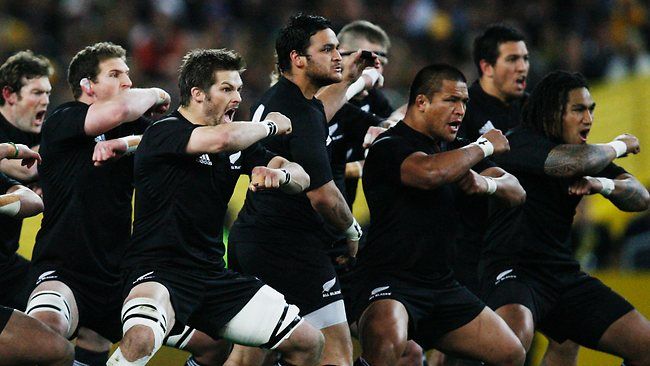
The god and one of his wives, Hine-raumati, had a son, Tane-rore, who would dance for his mother. His dance is said to be the movement of the air that can be seen on particularly hot summer days.
This trembling movement of light in the air is what inspired haka, which is meant to be a celebration of life. Eventually, the dance came to dominate social and communal aspects of Maori life, with different hakas used for different occasions, and with groups adding specific elements into their own dance.
The Elements of Haka
While styles of haka differ by occasion, there are certain elements that are essential to the dance.
Lines are always formed by performers, and there is always a leader. The leader initiates the dance by shouting phrases that are usually proverbs or instructions for how to stand during the haka.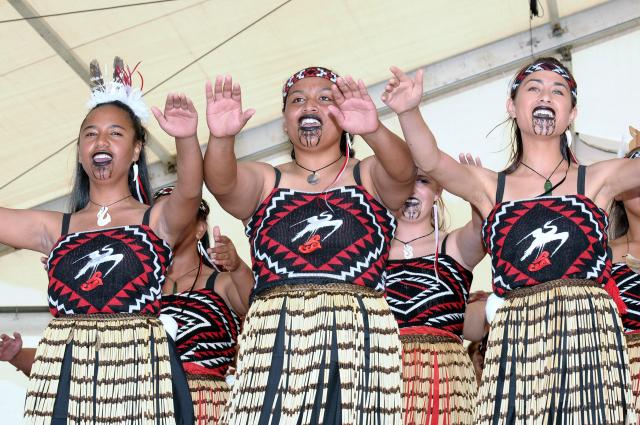 The leader's job is incredibly important, as it is on them to give strength and force to the performers, which is why the initial calls are fiercely delivered.
The leader's job is incredibly important, as it is on them to give strength and force to the performers, which is why the initial calls are fiercely delivered.
Each haka is specific in poses and expressions. But as the dance progresses and the performers are overtaken by the mana (force or power) of the haka, they express their own force with spontaneity. You'll see pkana (expressions) like pukana and ngangahu, which are the bulging or dilating of the eyes. Men also do whetero, or sticking out the tongue while contorting the face.
Depending on the purpose of the haka, these elements can instill fear, respect or solidarity.
Haka as a Warrior’s Dance
Most people believe that haka is a Maori warrior dance performed by men. Of course, now that you know "haka" means "dance," it would make no sense for it to be used only for war. Still, war haka, or peruperu haka, have an important role in Maori and New Zealand culture.
Still, war haka, or peruperu haka, have an important role in Maori and New Zealand culture.
The ancestral war cry of peruperu haka serves two purposes: to intimidate opponents and to motivate warriors. By using whetero and pukana (the bulging of the tongue and eyes), as well as grunting, shouting, jumping and beating their weapons, the warriors showed their force before battle to their enemies, to themselves and to the gods.
During battle, the whetero was meant as an actual threat of what was to come. Hundreds of years ago, the Maori would eat their opponents' heads to capture their mana. By sticking out their tongue in an aggressive way, they reminded the enemy tribe that they would eat them should they lose the battle. (Of course, that's not what whetero means in other hakas.)
This haka is one of the best known, perhaps because of its undeniable power. But other dances are often confused with it. If you want to know whether a dance is a peruperu haka, look for jumping and weapons.
War Hakas Aren't a Thing of the Past
Peruperu hakas aren't a thing of the past. Although New Zealand is not a country in conflict, it has participated in numerous wars in the 20th and 21st centuries. During these conflicts, soldiers have sometimes performed haka before battle, as their ancestors did.
Maori soldiers famously did peruperu hakas during both world wars, at a time when their opponents may not have known what the performance meant. But you don't really need to know the history to understand the feeling a war haka inspires.
Haka Is Much More Than a War Dance
Because of the common misconception that haka is only for battles, people are often shocked to learn they are performed at events like weddings, birthdays and funerals. Any time the community comes together, or when two communities gather, a haka is appropriate.
This meant that it fit war, yes, but it also has been part of peace treaties or the forming of alliances. They are also performed to show respect to a person with incredible mana.
When conceptualized like this, it makes perfect sense that important guests would be received with a haka, or that a wedding would include this powerful dance.
Wedding Hakas Are Incredibly Powerful
They are performed to show two families or communities coming together, as well as to show love and respect for the newlyweds.
And in Funerals, Hakas Are Meant to Show Strength Through Community
Some hakas are meant to connect the community to each other, drawing strength from the mana of the dance. Through this connection, dancers can engage with their grief but also find solace in knowing that they are not alone in it.
Haka at funerals are also a way to commemorate and pay your respect to the departed.
Hakas Can Also Be a Way to Welcome Honored Guests
Case in point: When Harry and Meghan — then the Duke and Duchess of Sussex — visited New Zealand in 2018, they were welcomed with a haka on more than one occassion.
New Zealand’s All Blacks Rugby Team Doesn’t Perform a War Haka
If there is one thing that has brought haka dance to the international spotlight, it is the All Blacks, New Zealand's rugby team.
The team began performing a haka before matches in the late 1880s, drawing attention to the tradition. As sports have become televised and, therefore, globalized, the signature dance has reached millions of people from all over the world.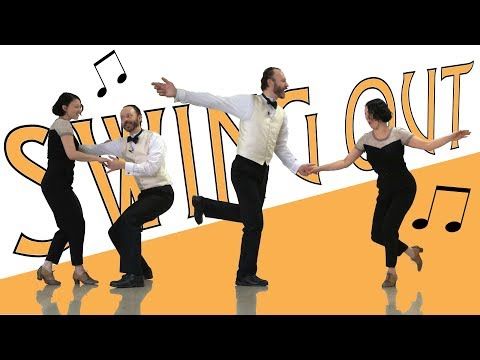
But their famous dance is not a war haka, as most people seem to assume. Instead, it is a ngeri haka, which is a style that is short, more spontaneous and is meant to symbolize community and strength. Ngeri haka is used to inspire and motivate the dancers. In fact, this is the style of haka dance that is usually performed at funerals, weddings and such events. And given that it emphasizes community, it perfectly fits sports as well.
Much of the confusion comes from the fact that the All Blacks haka — called "Ka Mate" — talks about life and death. "I may die, I may die, I may live, I may live" are the most important parts of the chant. And yet, the haka is not about war, but about narrowly escaping enemies.
Chief Te Rauparaha composed "Ka Mate" in the 1820s when another chief and his wife helped him hide in a pit so that his enemies couldn't find and kill him. The words reflect his feeling of uncertainty of whether he would live or die. It is said that as soon as Te Rauparaha came out of the pit, he performed the "Ka Mate" to celebrate his life as well as to thank chief Te Wharerangi and his wife Te Rangikoaea for saving him.
Haka Dance Is Also for Women
Another misconception people have about haka is that it is strictly for men. This comes from the idea that it's a war cry. But haka (like most dances) has traditionally been performed by both genders.
That said, women do not perform hakas exactly the way men do. Whetero, for instance, is reserved only for men, so you will never see a woman sticking out her tongue during a haka. Instead, female performers frown while pursing their lips. They also do not bend their knees or get low to the ground as men do. Rather, they stand straight and with their feet apart or one in front of the other.
Both genders use ngangahu, bulging and widening their eyes in an intense way.
New Zealand's Female Rugby Team, the Black Ferns, Also Do a Haka Dance Before Matches
The haka is called "Ko Uhia Mai," which translated to "let it be known." Whetu Tipiwai, a legendary Maori rugby player, composed it specifically for the Black Ferns.
Certain Styles of Haka Are Mixed-Gender
Because haka is all about community, it is not necessarily segregated by gender. The ngeri haka, for instance, is often performed by both men and women together. At a funeral, for instance, you will see everyone dancing together.
There is also a unique style called kapa haka, which includes instruments like a guitar, a ptatara conch shell and the poi and rkau, or the long sticks held by the men.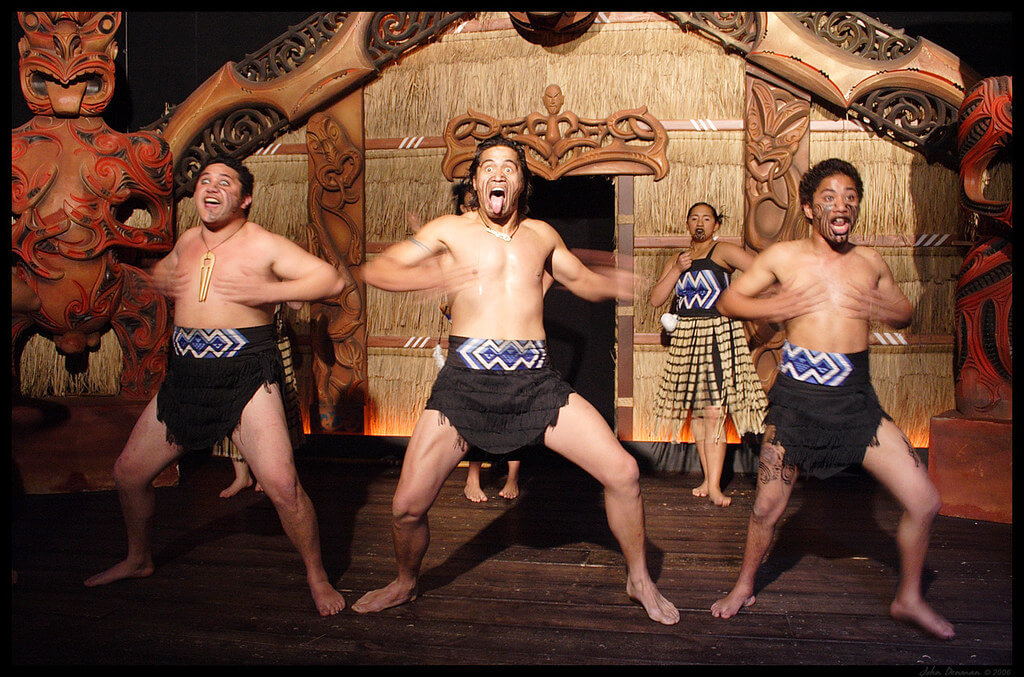 This dance is marked by more melodic singing and more fluid movements, as opposed to the chanting and sharp movements of other haka styles.
This dance is marked by more melodic singing and more fluid movements, as opposed to the chanting and sharp movements of other haka styles.
Where to See a Haka Dance in New Zealand
It would be a waste of money to go to New Zealand and not see a haka dance. Although the dance is performed everywhere in the country, we encourage you to go to Maori-led cultural village like Whakarewarewa Thermal Village or Ko Tane.
Tours in the village often include performances as well as haka classes, so you can experience the mana of the dance yourself.
ritual dance / Interesting / Articles / More / About everything
Not all ritual dances of different nations are lucky to find application in our time. The exception was the national dance of the New Zealand Maori tribe, which they themselves call "haka".
Haka (Maori haka) is a New Zealand Maori ritual dance during which performers stomp their feet, beat their thighs and chest, and shout out an accompaniment.
Haka was performed mainly in the evening for entertainment; there were purely male haka, women's, children's, as well as suitable for adults of both sexes.
Guests were also greeted with this dance. Welcoming dances usually began militantly, since the greeters did not know the intentions of the arrivals.
It was with this militant dance that the armed Maori greeted James Cook in 1769.
The Maori word "haka" means "dance in general" and also "song accompanying the dance". Haka cannot be attributed exclusively to "dances" or "songs": in the words of Alan Armstrong, haka is a composition in which each instrument - arms, legs, body, tongue, eyes - performs its own part.
There are several different legends about the origin of hack. According to one of them, this dance was first performed by women who were looking for a certain Kae, who killed a whale that belonged to the leader of the tribe. The women didn't know what he looked like, but they knew he had crooked teeth.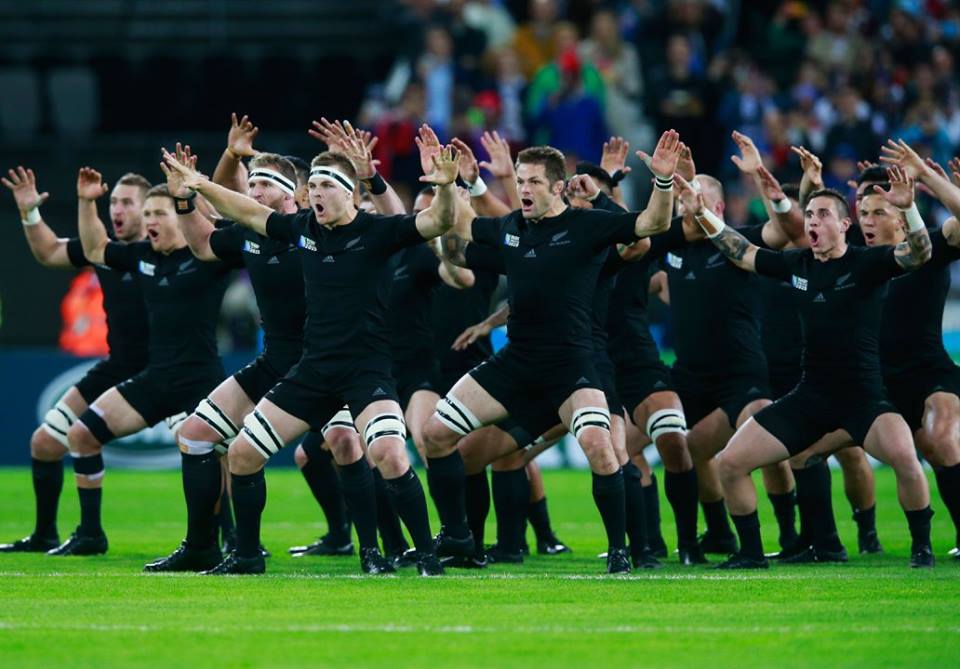 Kae was among other people, and in order to identify him in the crowd, the women performed a funny dance with comical movements. Seeing the haku, Kae laughed and was recognized.
Kae was among other people, and in order to identify him in the crowd, the women performed a funny dance with comical movements. Seeing the haku, Kae laughed and was recognized.
Christian missionary Henry Williams wrote:
“It is necessary to ban all old customs, dances, singing and tattoos, the main local orgy. In Auckland, people like to gather in large groups to demonstrate their terrifying dances.
Over time, the attitude towards dances on the part of Europeans improved, haku began to be regularly performed during the visits of the royal family.
Characteristic details of khaki - the dance is performed simultaneously by all participants and is accompanied by grimaces.
Related...
PolynesiaPolynesia is a gigantic region with a meager amount of land and a small population, the last inhabited on the planet and minimally affecting the judge eyeballs. The grimaces (movements of the eyes and tongue) are very important, and they determine how well the dance is performed.
The grimaces (movements of the eyes and tongue) are very important, and they determine how well the dance is performed.
The women who performed the haka did not stick out their tongues.
Non-military hacks may contain undulating finger or hand movements. The leader of the dance (male or female) calls out one or two lines of text, after which the rest respond in unison with a chorus.
The Maori, the original inhabitants of New Zealand, have always had a rich repertoire of cultural traditions, from myths, legends, songs and dances, to rituals and beliefs. The Haka dance is one of the most famous Maori traditions.
Over 1,500 students perform haka at teacher's funeral
There are several types of dance in the Maori culture:
- Peruperu is a military dance that warriors performed before the battle. Sometimes he was shown to his enemies completely naked;
- Toia Mai - community dance, which was always performed before the general meeting of the Maori;
- Tumoto - dance of rage, which was shown by the war after the defeat in battle;
- Poi - female variety of khaki, more calm and smooth; Horuhoru - dance for men and women;
- Ka-mate is a modern version of khaki for athletes.
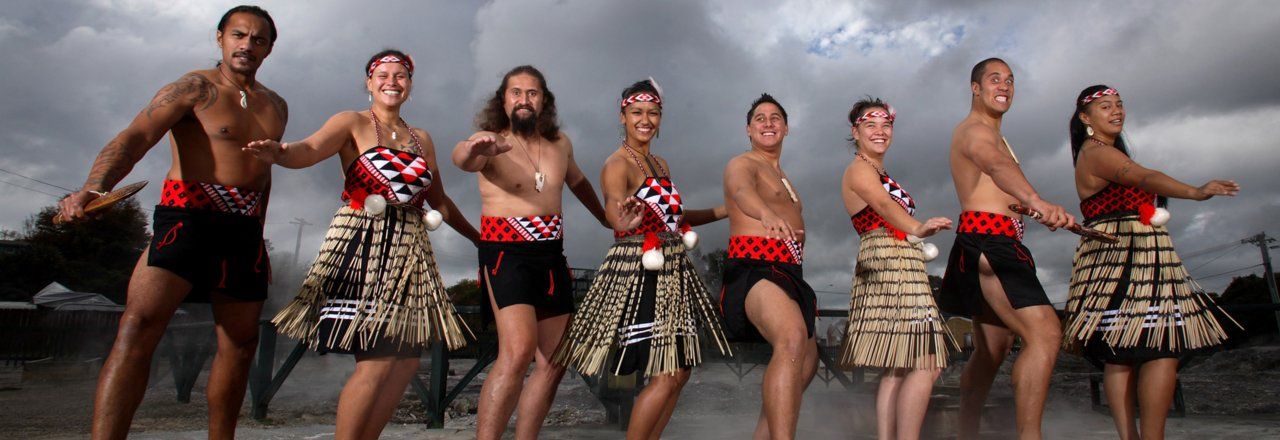
The origins of hack lie in the mists of time. The history of dance is rich in folklore and legends. In fact, it can be argued that New Zealand grew up with the haka tradition, going back to the first meeting between Maori and early European explorers, missionaries and settlers.
Although the latest traditions of the dance suggest that the haka was exclusively male, the legends and stories reflect other facts.
The story of the most famous hack - Ka mate - is a story about the power of female sexuality. According to legend, Haka was received from the sun of the god Ra, who had two wives: Hein-Raumati, who was the essence of summer, and Hein-Takurua, the essence of winter.
For most people, haka is a military dance. This is quite understandable because many have seen how the haka is performed before a fight or competition.
Although there are many differences between the types of war dance, the common feature is that they are all performed with weapons.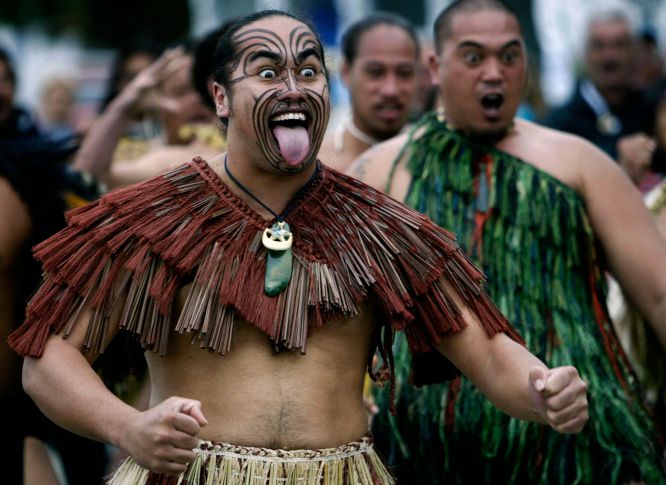 At a time when Europeans had not yet discovered New Zealand, the haka was used as part of the formal process of meeting tribes.
At a time when Europeans had not yet discovered New Zealand, the haka was used as part of the formal process of meeting tribes.
At present, the Maori dance the haka without traditional weapons, but various aggressive and intimidating actions remain in the dance: such as slapping hands on the thighs, active grimaces, sticking out the tongue, stamping the feet, rolling the eyes. These activities are performed along with choral chants and war cries.
In the 21st century, haka is regularly performed in the New Zealand Armed Forces.
Haka at the funeral of a New Zealand Army soldier
Twice a year, since 1972, Te Matatini (Maori Te Matatini) haka competition has been held. Since the end of the 19th century, rugby teams have performed this dance before the competition, in the 2000s this tradition caused much controversy and accusations of the "All Blacks" in the "devaluation" of the haka.
TheHaka has become a symbol of the All Blacks' strength and status in the rugby world.
The team leaves the impression of invincibility and cruelty.
Until the early 20th century, New Zealand rugby players almost always beat their opponents on the field. It was believed that this haka gave them such strength.
Since 1892, the New Zealand national team wore only black uniforms, and all team members had to be able to perform Maori ritual dances. Such behavior has been characteristic of the first New Zealanders since those distant times, when their canoes moored to the island shores.
New Zealand trade delegations and other official representations abroad are increasingly requesting groups of Haka performers to accompany them. It can be undeniably stated that haka has become a unique form of national expression.
The division of Korea into North and South Korea occurred in 1945 after the defeat of Japan, which had previously ruled Korea, in World War II. The United States and the USSR signed an agreement on the joint management of the country.
 ... open
... open Homo Sekapiens - who ate our ancestors
Another, supplemented, lecture by Drobyshevsky :) EVEN birds could peck at our ancestors ... Open
Dancing the Haka by the Rules )) «7x7» Horizontal Russia
The world-famous war dance Haka has been officially assigned to the Maori tribe to avoid copyright infringement. - So the Maori tribe officially secured the copyright for the haka dance, which became the face and symbol of the whole camp.
In particular, the New Zealand government has assigned tribal members ownership of the battle cry "Ka mate!"
(Source: http://www.destinations.ru/news)
Now it is officially recognized that the haka dance was invented by the leader of the Maori tribe named Te Rauparaha in order to celebrate the salvation of a warrior from death in a battle that occurred in 1820.
The welcome Maori dance is also performed at the official (and diplomatic) level, for example, see:
http://www.youtube.com/watch?v=pACmRoNicGY0119
Traditional Haka welcome for China’s president in New Zealand - no comment
While the tribal copyright is largely symbolic, it is very significant for Maori leaders. Members of the tribe will not be able to claim any royalties if their copyrights are infringed, however, improper use of the dance for commercial purposes is now prohibited.
The main purpose of owning dance copyright is to prevent theft and "wrong" performance of the haka dance, as happened, in particular, in 2006. Then the automobile concern Fiat released a series of commercials in which the dance of the Maori tribe was performed by Italian women. While the members of the tribe claim that the dance is performed only by men.
And here is a very European or even rather Anglo-Saxon version of Hack in college, see:
http://www.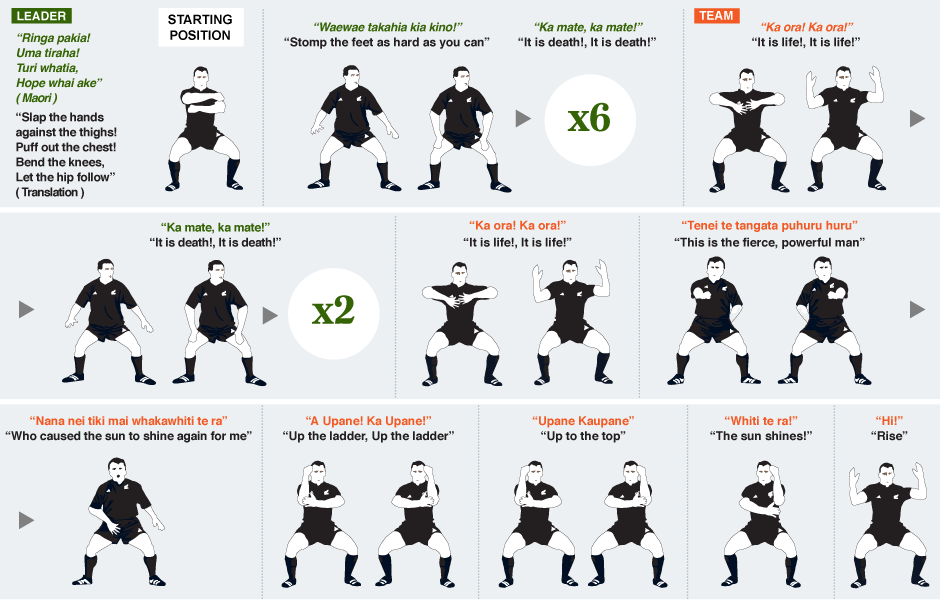 youtube.com/watch?v=OdXv3mggP08
youtube.com/watch?v=OdXv3mggP08
Hamilton Boys' High School Haka 2014
Another dance scandal occurred in 2007 when men dressed in gingerbread performed haku at the bakery awards . Of course, there is something to be offended by… not everyone likes the taste of ginger! ))
At the same time, hack, it must be admitted, is really in the national character,
both street culture and flash mob are reflected through hack, see:
http://www.youtube .com/watch?v=bmSNN7vZt_o
Flash Mob Haka Surfers Paradise 11.09.11.MP4
This is where the full awareness of one's own national identity is, when even law enforcement officers dance Haka!..)))
And here is another technology, the so-called. "cultural cooperation" is a manifestation of the soft power of the Maori tribe through the penetration of the culture of the haka dance into other countries:
Flash Mob Haka Trafalgar Square London 2012 , see:
http://www.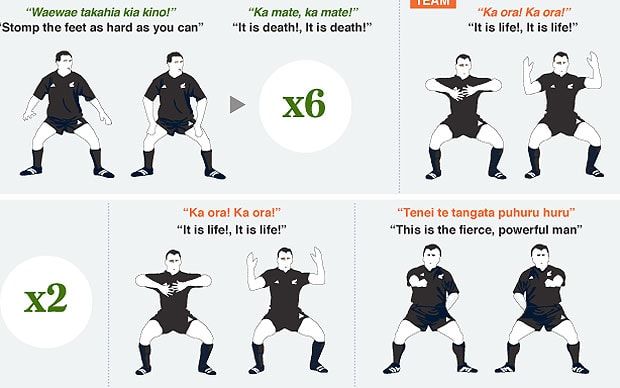 youtube.com /watch?v=IYpKHySqIpQ
youtube.com /watch?v=IYpKHySqIpQ
It must be said that the haka is a traditional New Zealand Maori dance, accompanied by choral support and / or shouted words.
In the old days, the Maori danced the haka, calling on the help of the spirits of their native nature, entering into battle with the enemy.
During the dance, with gestures and facial expressions, the warriors demonstrated terrible torments to the enemy, waiting for the latter in a few moments (consciousness encoding technique).
This is why the Haka is used in modern Marine training. At the same time, the official national anthem (do you catch familiar words in it?) is performed by soldiers in the ranks only after the haka dance! .., see:
http://www.youtube.com/watch?v=7Ynl8_slWrs
Deadliest Warriors In The World: Royal Tongan Marines Battle Cry - Sipi Tau (Kailao)
in business practice, and in offices, see:
http://www.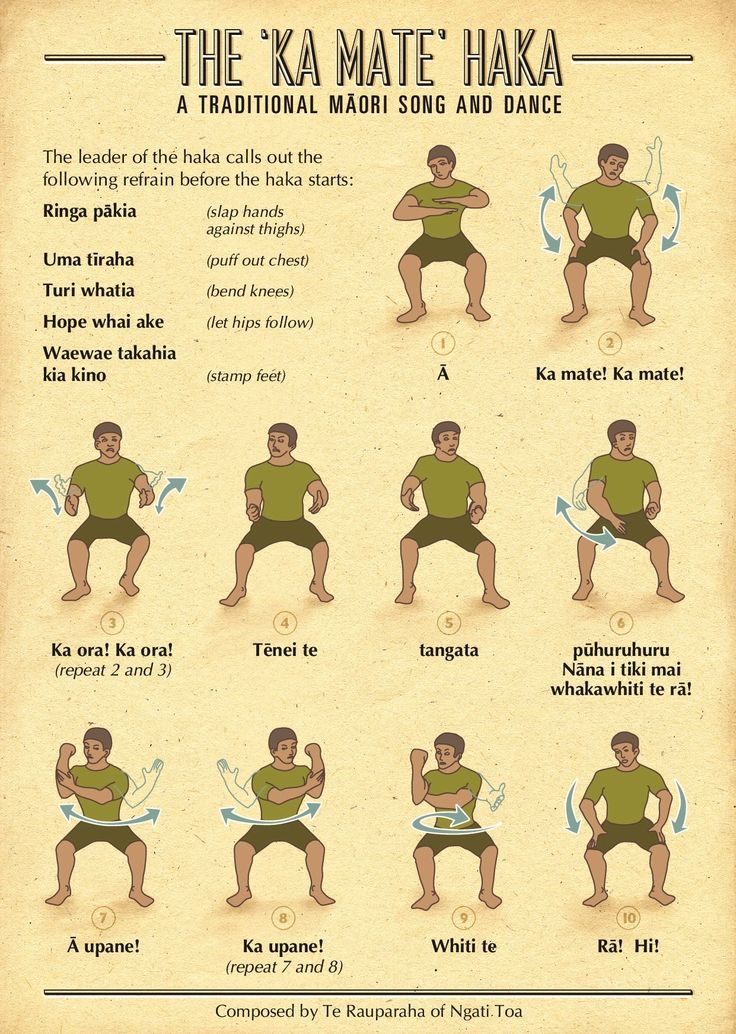 youtube.com/watch?v=2Vxy_-e_hZ8
youtube.com/watch?v=2Vxy_-e_hZ8
All Blacks meet Maori King with massive Haka
And here Haka performed by Prince Harry)), see:
http://www.youtube.com/watch?v=hzud2shV_UU
Prince Harry performs the NZ Army Haka. in facial expression and voice modulations. The most famous outside of New Zealand is the haka, traditionally performed by the country's national rugby team before matches.
Perhaps it was the performance of the All Blacks rugby haka dance that made him world famous. Although at one time "had a hand" (or rather, a leg) and the company "Adidas", which made it its advertising symbol on TV.
Haka in football GzI8c
It seems that the white T-shirts trembled and nervously sorted out-minced with bent legs ))
Finally rate the hack as... Wedding gift ! - it seems that the groom's jaw trembled and fell off, and the Maori bride was moved to tears .
